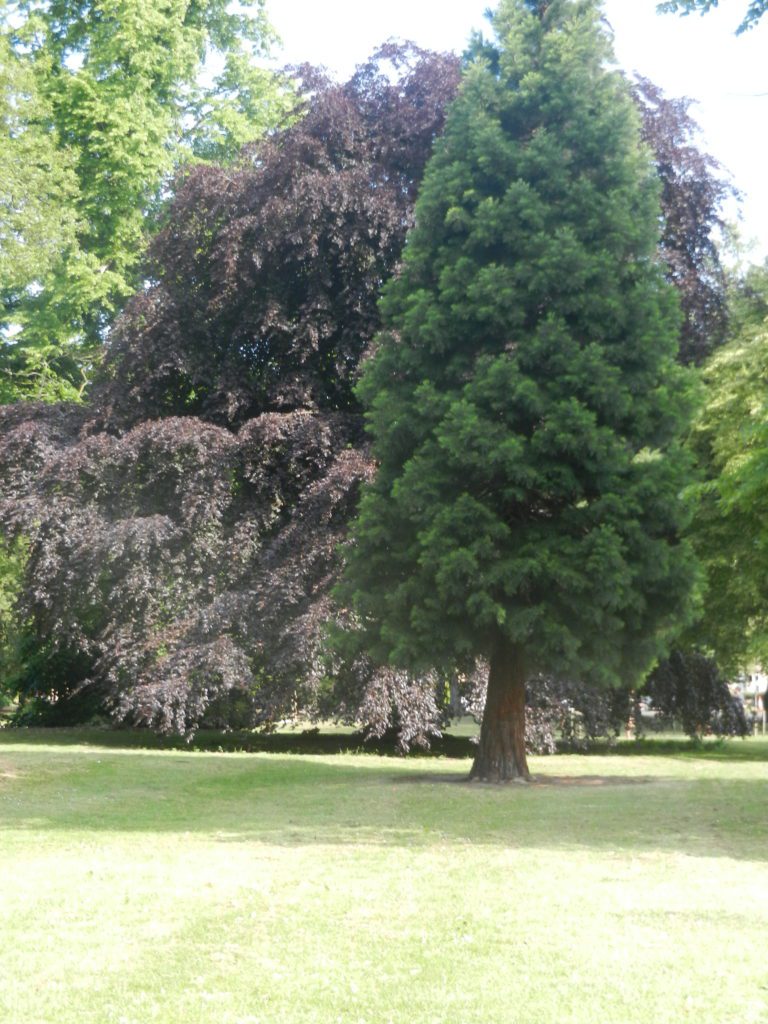
Today’s photo shows part of the arc of trees in Pearson Park, Hull that faces the triumphal arch entrance to the municipal park from Pearson Avenue. A mature copper beech stands behind a young redwood.
Beech trees are shallow rooted and thus vulnerable in gales, especially when in a heavy canopy of leaves. Beech trees like free-draining chalky soils so this tree has done well in heavy the boulder clay base soils of the Hull Valley; that said, the top layers of riverine/estuarine silts are fertile for the shallow root system of the tree. Beech trees have a very dense canopy of leaves that so shades the ground below in the summer that virtually no other plants can survive. In the winter this remains the case as the growing season is over.
Beech is/isn’t a native tree species, being one of the last types of tree to colonise post-glacial Britain it is native only to southern England; further north it has been introduced. Copper beech is a popular ornamental tree with a particular heavy drooping canopy (see above), I am currently not sure of the history of this variety.
Beech woodland has been the natural vegetation of the Chilterns in Oxfordshire for millennia. Here the wood was the raw material for quality furniture making while the beech nuts litter of the woodland floor in autumn was considered ideal forage for free-range swine, the resulting pork having a nutty taste. A common medieval illustration, carved on wood on misericords or illustrated on parchment, is of swine grazing a forest floor.
(to be continued).